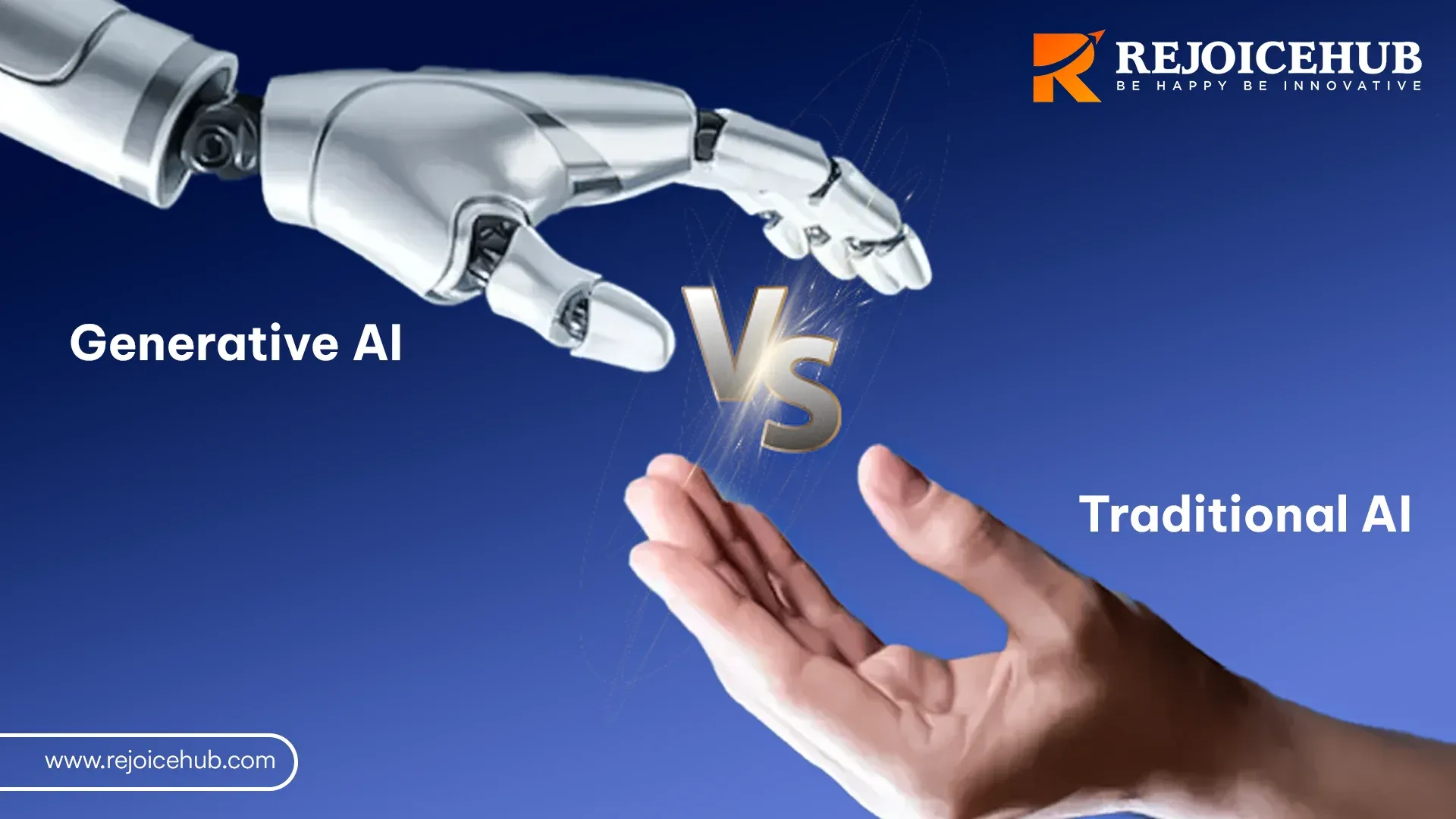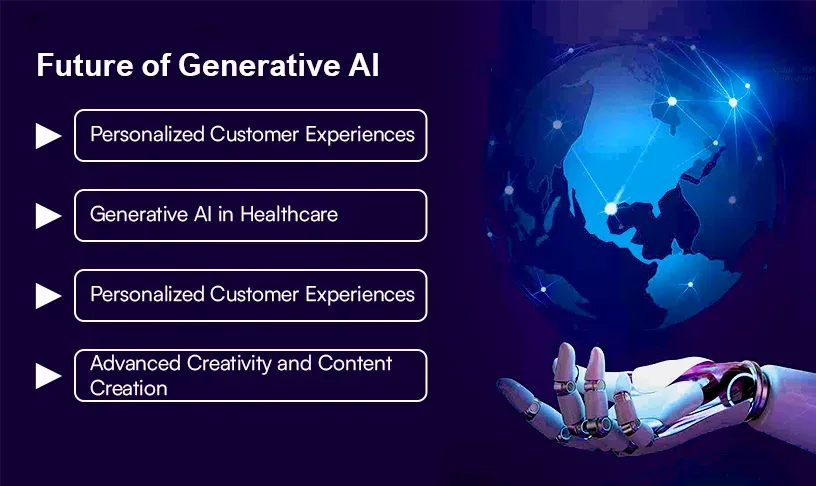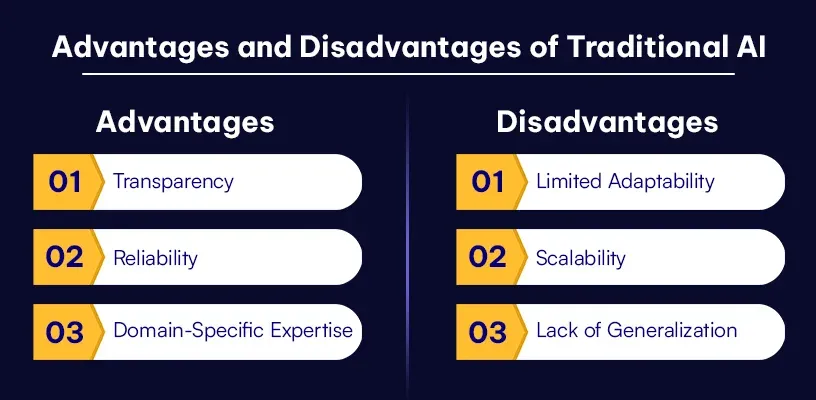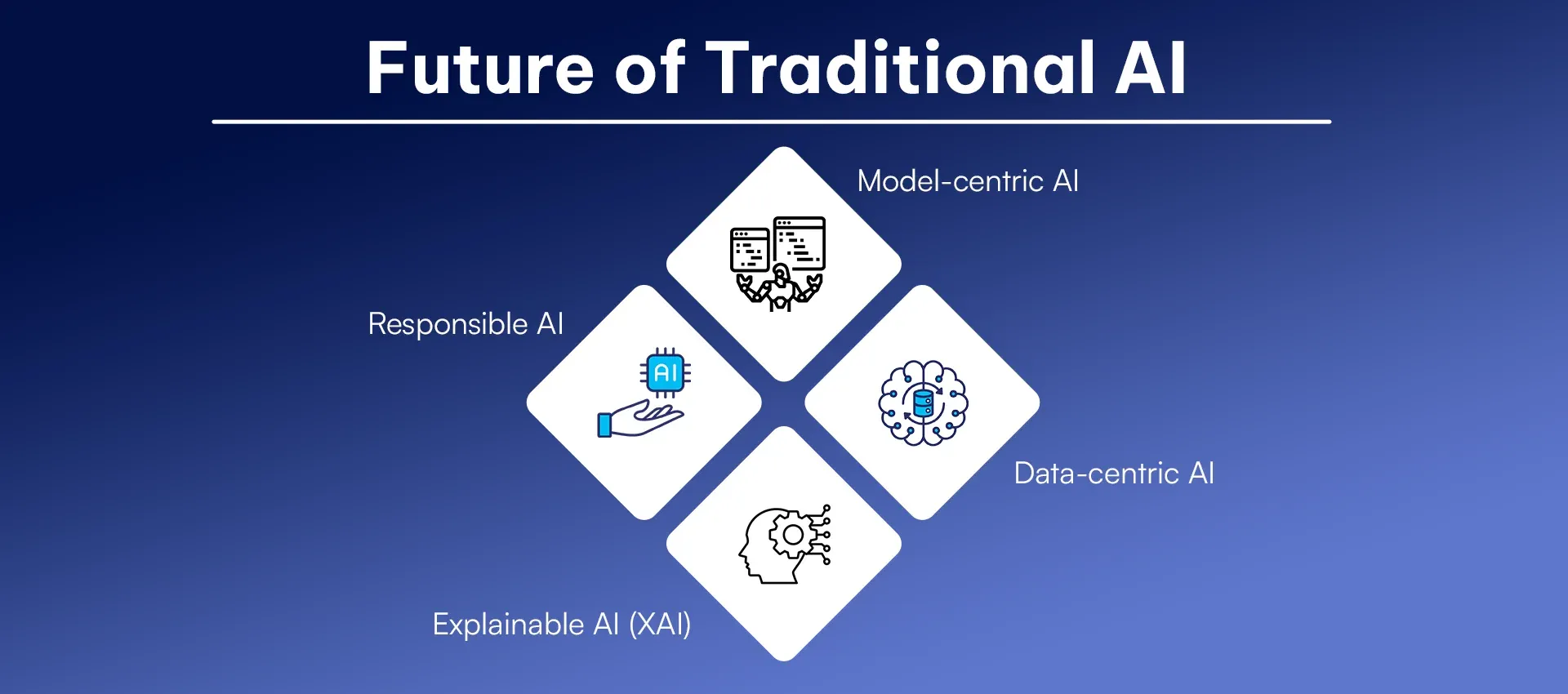
When it comes to AI, the first thing that comes to mind is ChatGPT.
So, for most people AI only means ChatGPT. And that is only generative AI, a type of AI.
But there are many other AIs as well like traditional AI.
When we say traditional, don’t think of it as old school and basic that can do simple things.
Both of them have their advantages and disadvantages.
And that's exactly what we are going to discuss here. To quickly summarize it, you will learn: What is generative AI vs AI? Difference between AI and Generative AI
What Is Generative AI?
Think of generative AI as a machine trained on large sets of data. But this machine can understand human language and not just code. It uses advanced algorithms and NLP to understand human language and provides output based on that.
For example, if you ask it to write an essay on “The Dog.” What it will do is, it will analyze all the data it is trained on. And then it will try to connect the data that is related to dogs to give you an essay. And it is not limited to writing only, it can help you create images, videos and write code.
Advantages of generative AI
Generative AI definitely has so many benefits. Now, we use it in our day-to-day life for writing emails, messages, getting information and more. It improves the overall productivity and helps us cut time to do tasks faster.
1. Improved creativity
You can use Generative AI models like DALL-E or ChatGPT. It helps you create unique content and also provides new ideas. And the best thing is, you can even brainstorm ideas with Gen AI.
2. Better customer service
With advanced chatbots and personalized solutions, generative AI transforms customer service, creating responses tailored to individual needs and improving satisfaction.
3. Time savings
Automating tasks with generative AI reduces time spent on repetitive processes, allowing human employees to focus on complex problem-solving and strategic thinking.
4. Boost productivity
Generative AI automates content generation and brainstorming, enabling companies to produce work faster and more efficiently.
5. Improved learning
It is practically impossible that a human tutor can personalize learning for everyone in the class. But AI can help you. AI can adapt to your learning patterns and help you with understanding the fundamentals. Also, it improves the overall retention and engagement.
Also read this article : Artificial Intelligence Companies in India
Disadvantages of generative AI
There are some disadvantages of gen AI. If you don’t use generative AI tools mindfully, it can impact your businesses as well as career path. Generative AI tools are meant to improve your productivity, so you can not just use everything directly from the tool. You have to use a mix of both human inputs and AI.
1. Compromised brand reputation
Copying and using the same content with cross-checks can harm your brand image. So, always verify the content with reliable sources before publishing it.
2. Inadequate sourcing
Generative AI models are currently trained on limited data. So they don’t have access to real time data and can’t process it. It limits the source of information and can sometimes result in inaccurate outputs.
3. Inappropriate use
Generative AI tools may be misused, creating harmful or unauthorized content, raising ethical concerns.
4. Possible bias
AI models may reflect biases present in training data. It leads to unfair outcomes or inappropriate content generation.
The Future of Generative AI
The future of Gen AI definitely looks promising. So many technology giants are building their own models. And they are improving rapidly. So, we can say that we will see better and evolved models in the future with some amazing use cases.

1. Personalized Customer Experiences
AI enables hyper-personalized content. Be it shopping recommendation or customizing services, Gen AI will help with it.
2. Generative AI in Healthcare
Generative AI will help healthcare providers with drug discovery and personalizing patient care. It is already being used to detect some diseases like cancer in early stages.
3. Advanced Creativity and Content Creation
We are already using Gen AI to generate content, code, music, and more. And it is going to be used in more use cases where creative work is involved.
What Is Traditional AI?
Traditional AI focuses on task-specific intelligence, leveraging data and algorithms to perform structured, reliable operations without creating entirely new content. Often used in predictive analysis, fraud detection, and domain-specific applications, it is known for consistency and transparency.
Advantages of Traditional AI
One of the key advantages of traditional AI is its reliability. It is trained on domain specific data, so it can provide consistent outcomes in most cases. It is really helpful in businesses where there is no room for mistakes.

1. Transparency
Traditional AI models often allow for greater traceability, making decisions that can be audited for transparency.
2. Reliability
By focusing on specific tasks with pre-defined outcomes, traditional AI provides consistent, reliable results.
3. Domain-Specific Expertise
Traditional AI is adept at tasks within a specific field, such as medical diagnostics or fraud detection, where accuracy and expertise are essential.
Limitations of Traditional AI
The structured nature of traditional AI limits its flexibility. Since, traditional AI is designed for specific tasks, it can not be used for other use cases. Also, there are more evolved versions of AI available, so businesses might prefer using them over traditional AI.
1. Limited Adaptability
Traditional AI often struggles to adapt to new tasks beyond its initial programming, limiting flexibility.
2. Scalability
Scaling traditional AI can be challenging, as it requires significant computational power and data management resources.
3. Lack of Generalization
Traditional AI performs best within specific domains and doesn’t generalize well to unfamiliar problems or data.
The Future of Traditional AI
In future, traditional AI models will be more focused on being more adaptive and flexible. It will include models that focus more on using high quality of data, and advanced algorithms, so businesses can rely on it for multiple use cases.

1.Model-centric AI
This approach focuses on optimizing models to be efficient within defined tasks, improving overall accuracy and reliability.
2. Data-centric AI
Data-centric approaches prioritize high-quality, well-organized data, improving outcomes through better inputs rather than complex models alone.
3. Explainable AI (XAI)
The demand for transparency is growing. And XAI will help make the AI decision making process more clear and interpretable.
4. Responsible AI
Focusing on ethics and fairness, responsible AI frameworks ensure equitable, unbiased outcomes that align with societal values.
Generative AI Vs Traditional AI - A Simple Breakdown for Easier Understanding
To clearly understand the difference between AI vs generative AI, we have created a table for you. We have covered different aspects so you can get a full picture of GenAI vs AI
| Aspect | Generative AI | Traditional AI |
|---|---|---|
| Objective | Create new content, ideas, or designs | Automate specific, rule-based tasks |
| Problem-solving approach | Data-driven creativity, leveraging neural networks | Algorithmic and data-driven processes |
| Techniques and models used | Deep learning, neural networks | Machine learning, supervised learning |
| Data requirements | Large, diverse datasets | Domain-specific, quality-controlled data |
| Focus and Output | Creative output, novel solutions | Predictable, task-specific outcomes |
| Applications | Content creation, personalization, healthcare | Fraud detection, diagnostics, recommendation systems |
| Strengths | Enhances creativity, personalized experiences | Consistent, transparent, reliable |
| Limitations | Potential bias, misuse risks, resource-intensive | Limited flexibility, domain-specific |
Conclusion
It is now clear how Generative AI is different from traditional AI models. At Rejoice, we understand the immediate need of using AI in their business. So, we provide customized AI development solutions for modern businesses.
Be it LLM development or integrating AI into your existing system, our team can help you. With our solutions, you can optimize your operations and increase productivity.
Frequently Asked Questions
1. How is generative AI different from traditional AI?
Generative AI is trained to be more flexible and provide outputs based on a variety of inputs. On the other hand, traditional AI is trained on specific tasks and can only help you with them.
2. Which one is better, generative AI or traditional AI?
Well, it depends on the use case. If you need more flexibility you can go with gen AI. But you need more reliability, traditional AI might be a better choice.
3. What are some examples of traditional AI?
Assistants like Siri and Google assistant are the best example of traditional AI. But, now they are also moving towards generative AI to provide more personalized experience.
